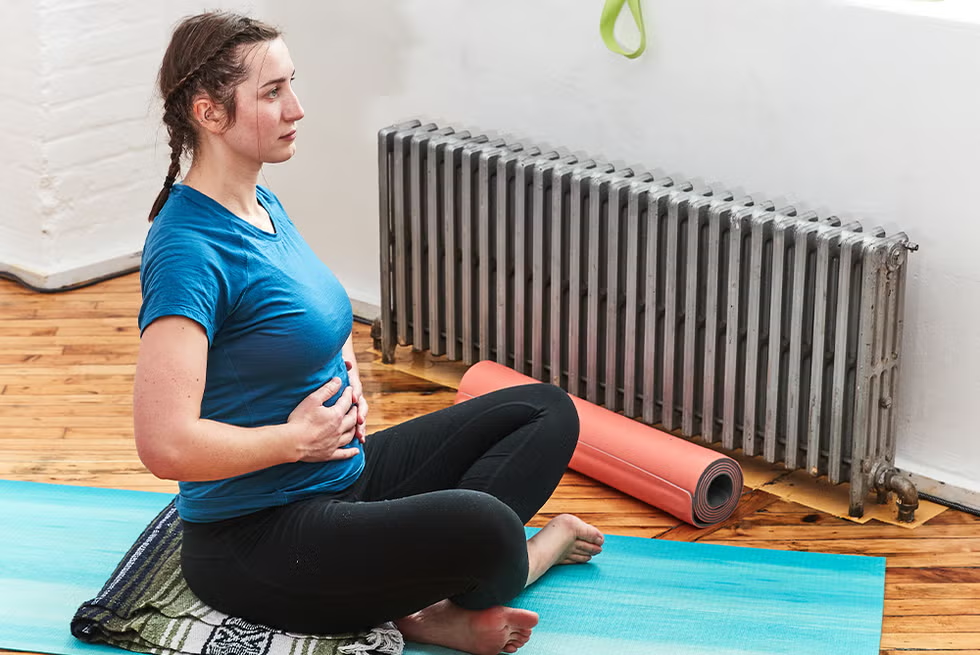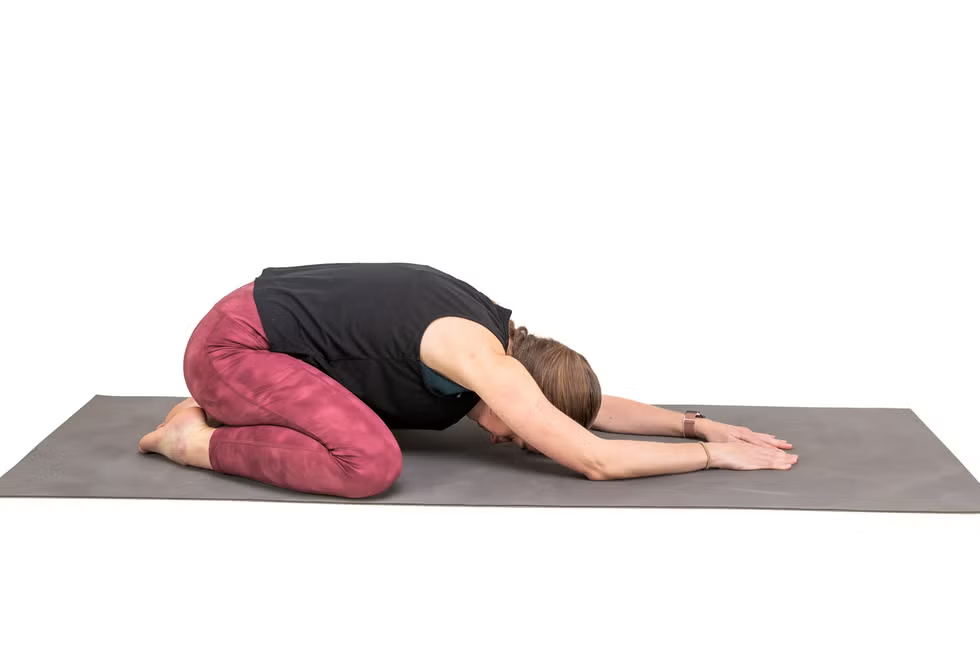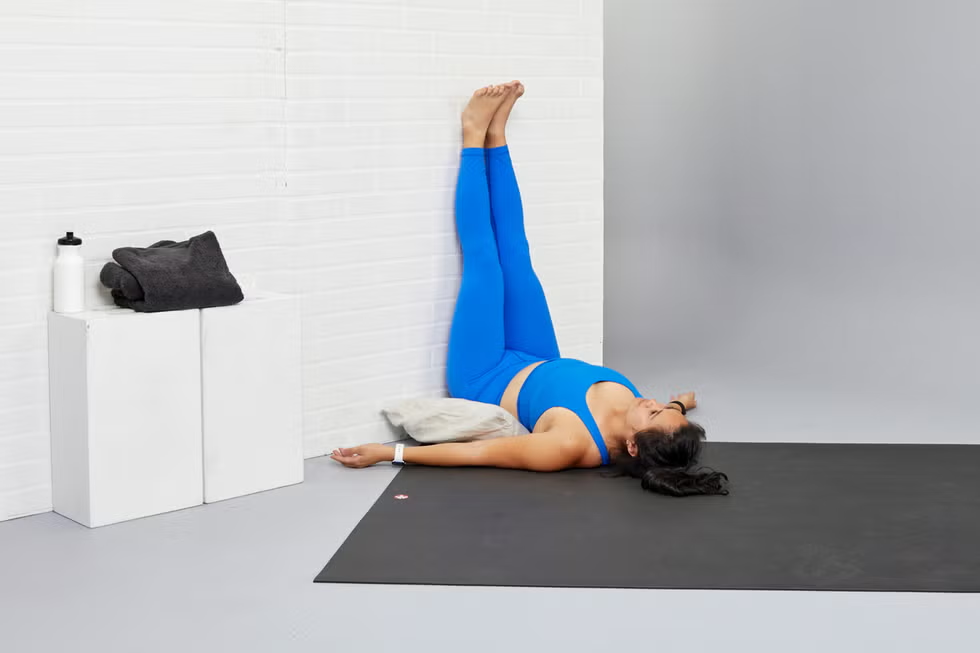Kegel exercises are not the answer.

Jump to:
When women—runners or not—hear “pelvic floor,” their minds likely go straight to kegel exercises. And that’s no surprise, really, given the history: A doctor in the 1940s, Arnold Kegel, worked with men who suffered from rectal pain and found that a kegel exercise—essentially contracting the muscles that stop urine flow—could help improve the pain.
Doctors then extrapolated the kegel exercise and directed women who’d given birth to do kegels (if you got stretched out during childbirth, just tighten it back up!), but there was never much instruction on how to do it correctly or whether a woman should even do it at all, says Lauren Garges, D.P.T., director of pelvic rehab with St. Luke’s University Health Network in Bethlehem, Pennsylvania.
And there is a scenario in which kegels actually make pelvic health worse: A type of pelvic floor dysfunction is when the muscles are too tight. That means the muscles work too hard and instead of strengthening them, you actually need to relax the pelvic floor.
“Tightness is quite complicated as far as ideology,” Garges, who’s also a runner, tells Runner’s World.
A tight pelvic floor, Garges says, is often related to an injury—like falling on your tailbone—but it can also be a result of a difficult labor and delivery, or sexual abuse trauma.
Also, runners are often inherently more tight than their non-running counterparts, owner of Maryland-based Arnold Physical Therapy, Jill Arnold, P.T., D.P.T., points out. That’s thanks to yes, the sport, but also the higher-stress personalities. “Runners already have the propensity to run tight in our body, neck, and pelvic floor,” Arnold tells Runner’s World.
Other causes of a tight pelvic floor include a history of irritable bowel syndrome and chronic urinary tract or yeast infections, Arnold says. “Your body is guarded to protect itself,” she says.
To help you understand what it means to relax the pelvic floor muscles—and how to determine if that’s what you need for better health—we asked experts to explain more about the pelvic floor.
Signs Your Pelvic Floor Muscles Might Be Too Tight
People, including runners, who experience tight pelvic floor muscles might suffer from pain while running or sitting, pain during intercourse, urinary incontinence, lower back pain, hip pain, erectile dysfunction, and even trouble sitting on a bicycle, Garges explains.
“Sometimes running can be relieving in the moment, but it’s not helpful in the long run if you’re not [addressing] the tightness,” Garges says.
Garges shares a simple at-home activity that can help determine if you’re suffering from an overactive pelvic floor:
- Sit on a large yoga ball or a rolled-up hand towel. There should be pressure on the perineum, the space between the genitals and anus.
- Using the muscles you would use to stop the flow of urine or gas, imagine you’re trying to vacuum up a marble. Then, actively try to relax those muscles to see if they go back down, like an elevator.
“If they’re too tight, nothing may happen because your muscles are already as tight as they can get,” she says. “Or you might be able to squeeze upward but cannot feel the downward [release]. That’s a sign of tension.”
On the flip side, Garges, says a sign of pelvic floor weakness—which is that you actually need more strengthening instead of relaxation of the pelvic floor muscles—is being challenged to contract the muscles.
Risks of Overactive Pelvic Floor Muscles
Like with any nagging injury, when left untreated, overactive pelvic floor muscles can cause problems throughout the body and become very difficult to fix.
Tightness “is likely going to snowball into further problems down the road,” Garges says. One particular challenge is that over time, a tight pelvic floor might be misdiagnosed as a hip or lower back issue.
“It’s harder to differentiate,” she says. “The original cause might be a tight pelvic floor, but it goes on for years, and now a woman is diagnosed with chronic lower back pain.”
People suffering from excessively tight pelvic floor muscles might develop an intolerance to intercourse, gynecological exams, and tampons. They might struggle with constipation, or urinary incontinence or frequency.
“If left untreated, the muscles are so exhausted they’re not going to work properly,” Garges says.
4 Ways to Relax Your Pelvic Floor
The infamous kegel exercise, when done properly, can help strengthen the pelvic floor muscles. But often, women (and men) do it incorrectly, or focus only on the “fast-twitch” pelvic floor muscles—quick bursts of contractions, versus long, controlled holds, which will help support pelvic floor health during running.
But, as Garges explained, if your muscles are too tight, engaging in a kegel exercise will only make it worse. Or, as Arnold puts it, women might be walking around in a “perma-kegel state,” when they can’t release the exercise.
Instead, Garges and Arnold share these stretches that will help relax and stretch the pelvic floor. These should be done in addition to stretching your hips and hamstrings after a run, which can also support the health of your pelvic floor.
1. Deep Breathing

Why it works: “Every pelvic floor therapist starts with deep breathing,” Garges says. “It’s so important to put your body in rest and digest mode.” Deep breathing can also increase blood flow, Arnold explains.
How to do it:
- Take a slow, deep breath through the nose, expand the rib cage.
- Inhale for 4 seconds and exhale for 4 seconds. “Don’t push the breath out,” she says, noting you should not use your upper torso muscles to exhale. Make the exhale soft and smooth.
- Repeat for 3-5 minutes.
2. Child’s Pose

Why it works: Child’s pose allows you to stretch both sides of the pelvic floor, including the lower back.
How to do it:
- Kneel with knees wider than shoulder-width apart and feet together.
- Bring glutes to heels.
- Lean torso forward, walking hands straight out to bring chest to floor. Rest forehead on the floor, and move arms so they frame head.
- Practice deep breathing for 3 minutes. Soften and lengthen the body.
3. Hips and Legs Up

Why it works: This move allows the pelvic floor muscles to fully relax, Garges says, because they’re not working against gravity.
How to do it:
- Lay faceup, facing a couch or chair. Scoot glutes to its base, with a pillow under lower back.
- Rest calves on the couch or chair cushion and slightly roll knees away from each other so that legs are fully relaxed.
- Practice deep breathing for 3 minutes.
4. Butterfly Stretch

Why it works: Arnold likes this stretch because it focuses on areas near or attached to the pelvic floor, including the adductors (inner thighs).
How to do it:
- While sitting down, bend knees and press the soles of feet together.
- Place hands on ankles or shins.
- Allow spine to lengthen and chest to broaden. Bring shoulders down.
- Practice deep breathing for 3-5 minutes.
When to See A Pelvic Floor Physical Therapist
If your symptoms of tightness haven’t improved after two to three weeks of regular stretching and deep breathing, a pelvic floor physical therapist can better assess the problem and provide treatment.
In addition to a traditional physical therapy assessment, the pelvic floor specialist will conduct an internal exam to look at four things:
- Muscle tone (whether the muscles are too tight or too weak)
- Sensation
- Strength
- Ability to relax, lengthen, and release the muscles
In addition to prescribing at-home exercises and stretches, a pelvic floor physical therapist might provide hands-on stretching.